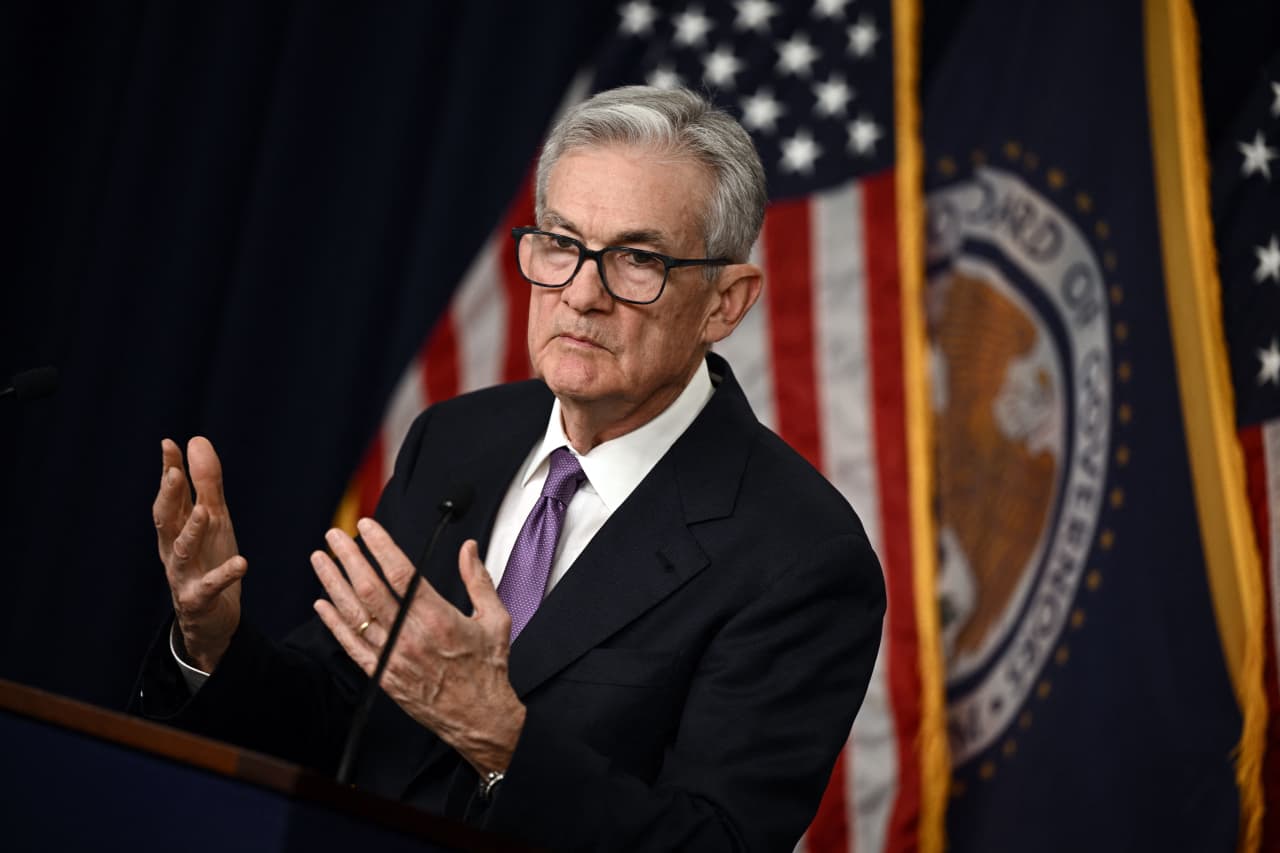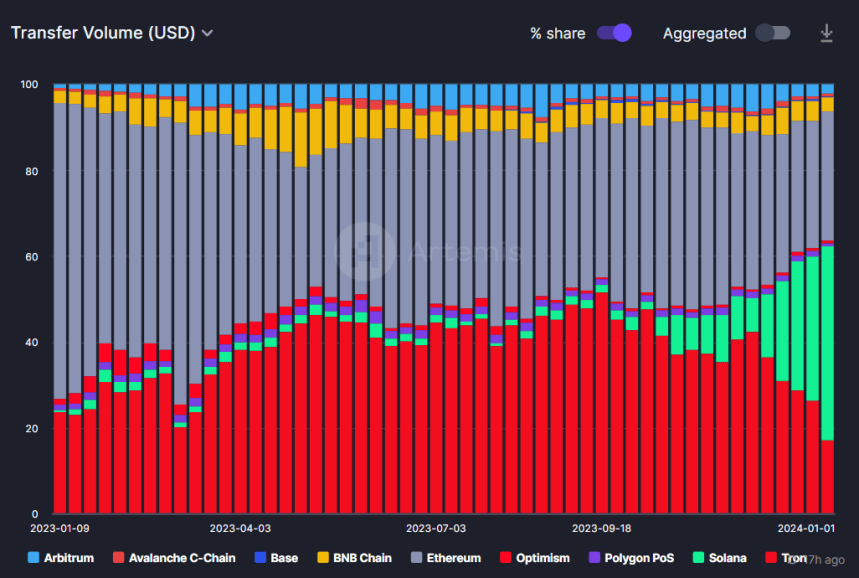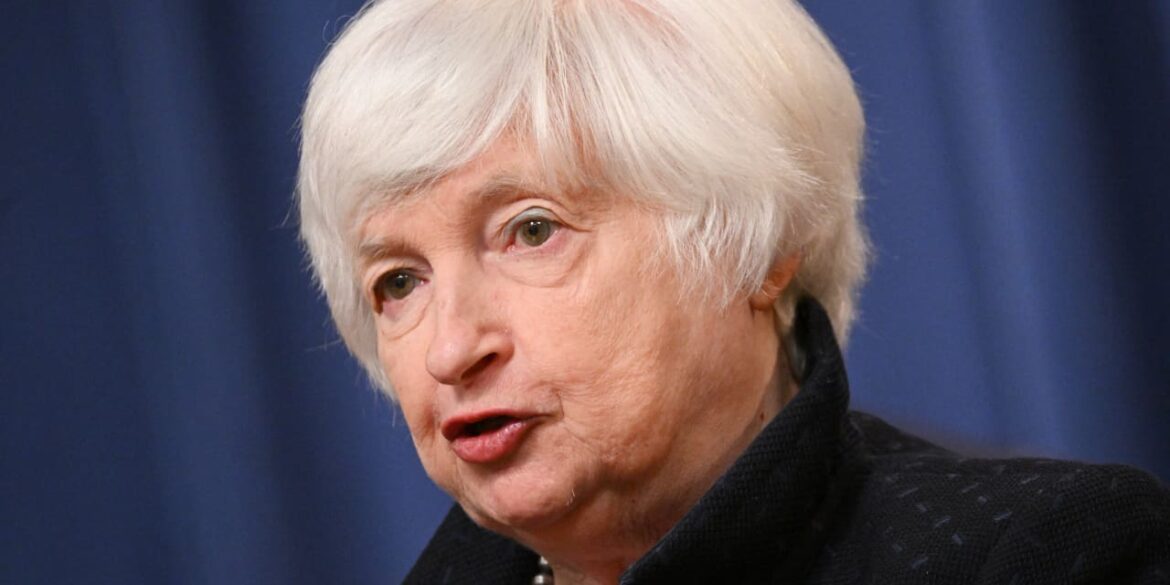
The U.S. central bank should stay the course and avoid prematurely celebrating the end of inflation above 2%.
Source link
threat
Bitcoin (BTC)’s Price Faces Threat As Analyst Foresees $54.73 Million Liquidation
According to data from CoinMarketCap, Bitcoin (BTC) has maintained its upward price trajectory over the last day, gaining by 4.04% to briefly trade above the $48,000 mark. As BTC now hovers around the $47,100 price zone, investors and market experts remain highly speculative about the token’s next action. On that note, popular analyst Ali Martinez has called a major prediction that could spell weighty losses for many investors.
Liquidity Hunters Target $45,810 In Potential Bitcoin Price Manipulation Plot
In an X post on Friday, Martinez predicted an incoming dip in Bitcoin’s price driven by a planned liquidation. Using data from the cryptocurrency futures trading platform, CoinGlass, the analyst stated the Bitcoin liquidation heatmap indicated that there is potential strategic liquidation in play.
According to the #Bitcoin liquidation heatmap, there’s a potential strategy unfolding where liquidity hunters could drive the price of $BTC down to $45,810. This move is aimed at triggering liquidations amounting to $54.73 million! pic.twitter.com/monFlZmvQ6
— Ali (@ali_charts) February 9, 2024
Martinez stated that liquidity hunters in the BTC market could be looking to push the token’s price as low as $45,810 for personal benefits. For context, liquidity hunters are traders or investors who actively seek opportunities in the financial markets to exploit changes in liquidity.
This set of market players often targets specific price levels where there is a concentration of stop-loss orders or where market liquidity is expected to be thin. By triggering liquidations or capitalizing on price movements, liquidity hunters aim to profit from short-term market inefficiencies.
According to Martinez, the liquidity hunters in the BTC market are currently looking to induce an estimated 3% decline in the token’s price. While this change may seem minimal, it represents an astounding $54.73 million in liquidations. Based on these numbers, BTC traders and investors should be wary of potentially significant losses in the coming days.
BTC Price Overview
The premier cryptocurrency has recently taken flight, gaining by 8.6% in the last two days after a flat period of consolidation stretching to the beginning of February. Interestingly, the asset’s pathway to higher gains appears more confident with recent developments in the Bitcoin spot ETF market, which recorded a total net flow of $403 million on February 8 – the highest value of that metric since January 17.
At the time of writing, Bitcoin trades at $47,238, with a 0.26% gain in the last hour. Meanwhile, the coin’s daily trading volume has soared by 56.33% and is now valued at $39.42 billion. In addition, BTC maintains its top spot in the crypto market with a total market cap of $924.67 billion.
BTC trading at $47,229 on the daily chart | Source: BTCUSDT chart on Tradingview.com
Featured image from Nairametrics, chart from TradingView
Disclaimer: The article is provided for educational purposes only. It does not represent the opinions of NewsBTC on whether to buy, sell or hold any investments and naturally investing carries risks. You are advised to conduct your own research before making any investment decisions. Use information provided on this website entirely at your own risk.
Solana Users Face Mounting Threat As Drainer Attacks Surge, SOL Price Plummets 13%
As the price of Solana (SOL) has skyrocketed by an astounding 722% year-to-date, the network’s rapid growth has attracted both attention and challenges.
Not only has the native token gained significant value, but the use of Solana-based meme coins such as Bonk Inu (BONK), which has grown over 854% year-to-date, and decentralized applications (dApps) have skyrocketed. Unfortunately, this increased popularity has led to increased attacks against the so-called “Ethereum Killer.”
Malicious Solana dApps Exploited
Web3 security firm Blockaid has recently observed a concerning trend of users falling victim to attacks by Solana-based drainers.
One notable example is the website lessfeesndgas[.]org, which succeeded in stealing tokens from the Solana Program Library (SPL), which is designed to support the creation and management of tokens on Solana and SOL worth hundreds of thousands of dollars.
Interestingly, according to the company’s post on X (formerly Twitter), Blockaid’s secure wallets remained immune to these attacks from the moment the site went live, preventing any connections from being made.

The sophistication of these drainers is noteworthy, according to the firm, as they can fool the simulations used by Solana wallets, causing users to sign malicious transactions unknowingly. Web3 security firm Blockaid further stated:
As Solana continues to gain popularity, drainer groups are increasingly moving towards it, as indicated by the growing number of malicious Solana dApps detected by Blockaid.
Solana’s rapid ascent as a high-performance blockchain platform has drawn admiration and scrutiny. Its ability to process transactions quickly and at a lower cost than Ethereum has positioned it as a strong competitor.
However, the network’s success has also made it an attractive target for malicious actors seeking to exploit vulnerabilities and capitalize on its growing user base.
Still, this is not the only bad news for Solana in the past few hours, as its native token has been experiencing a continuous sharp drop in price, leading to the belief that its uptrend and bull run may be over despite the possibility of a rebound in the overall crypto market.
Stablecoin Surge And NFT Sales Fail To Prevent SOL’s Price Drop
In just five hours, the price of SOL experienced a significant 13% drop, hitting a low of $85 on Wednesday. This decline occurred despite notable growth in stablecoin transfers, which saw a rise of over 45% this week.

Additionally, on Tuesday, SOL surpassed Ethereum in monthly trading volume for non-fungible token (NFT) sales, marking a milestone for the network.
SOL is the fifth-largest cryptocurrency, boasting a market capitalization of $42.6 billion. It holds a $12 billion lead over XRP and trails just behind Binance Coin (BNB) by a mere $6 billion.
The trajectory of SOL’s price remains uncertain as investors await signs of a potential bullish momentum resurgence.
Building a more secure framework for decentralized applications (dApps) could be pivotal in restoring investor confidence and attracting additional capital to the ecosystem, potentially propelling SOL to reclaim its one-year high of $126, previously achieved on December 25.
Featured image from Shutterstock, chart from TradingView.com
Disclaimer: The article is provided for educational purposes only. It does not represent the opinions of NewsBTC on whether to buy, sell or hold any investments and naturally investing carries risks. You are advised to conduct your own research before making any investment decisions. Use information provided on this website entirely at your own risk.
Commercial real estate a top threat to financial system in 2024, U.S. regulators say

Few industries have been affected by the COVID pandemic and its aftermath like commercial real estate.
Inflation, rising interest rates and the persistence of work-from-home arrangements have battered the sector, and U.S. financial regulators are keeping a close eye on the industry, given that commercial real estate loans are widely held by banks, insurance companies and other financial institutions.
The Financial Stability Oversight Council issued its 2023 annual report Thursday, and listed commercial real estate as the first in its list of financial risks to the U.S. economy.
FSOC was created in the wake of the 2008 financial crisis to identify potential risks to the financial stability of the United States and to promote market discipline. It comprises the heads of the major U.S. financial regulators and is chaired by Treasury Secretary Janet Yellen.
The report noted that commercial real estate loans totaled nearly $6 trillion in the second quarter of 2023, roughly half of which were owned by U.S. banks, and that “a substantial volume” of these loans are set to mature in the next few years.
Read more: More office zombies? Only 11% of maturing loans repay in September, Moody’s Analytics says
Regulators are concerned that a vicious cycle may take hold, whereby elevated office vacancy rates leave borrowers unable to finance their debt, which in turn leads to distressed sales that impact the value of neighboring properties. The lack of traffic in some business districts also has the compounding effect of reducing demand for restaurants and retail locations in business districts.
Given that commercial real estate loans are the largest loan category for nearly half of U.S. banks, and that one-quarter have commercial real estate loan portfolios that are large relative to their capital reserves, bank watchdogs also fear that trouble in the sector could lead banks to lend less to all sectors of the economy.
“Interlinkages between financial intermediaries that are active in the commercial real estate market, including banks, insurance companies, REITs, and private lenders, could amplify financial stress in the sector,” the report reads.
Vacancy rates are now also rising in large, multifamily apartment buildings and property values in that sector have fallen 4% from pre-pandemic levels and 16% from the year prior, the report said.
There’s more pain to come in this sector as well, particularly in “U.S. sunbelt markets” in Texas, Florida and Arizona, where new properties continue to be built at a rapid clip even as rents have started to grow more slowly or even decline.
A financial stability report issued by the Federal Reserve in May also named commercial real estate as a significant risk to the economy and banking system, and research published last month by the St. Louis Fed showed that leverage in the sector is rising as prices decline and few deals have been restructured.
See also: Macy’s real estate alone is worth nearly $3 billion more than investors’ bid
The study showed that smaller banks tend to have greater exposure to commercial real estate debt, which could signal that the struggles in the regional bank sector
KRE,
evident earlier this year following the failure of Silicon Valley Bank and Signature Bank of New York, could persist.
Meanwhile, financial regulators are now keenly aware following the SVB bailout that that troubles at smaller banks can pose broader risks to financial stability.
“Risks from a potential downturn in the [commercial real estate sector] are concentrated in the smaller banks and no in the large bank holding companies that are commonly perceived to be too big to fail,” the St. Louis Fed researchers wrote.
“Still as the 2007-2008 financial crisis has shown,” they added, “large waves of failures among even small institutions can generate significant disruptions in financial markets and later spread to the real economy.”
Sui network’s persistent growth propelled it into the league of the top 100 cryptocurrencies by market capitalization, but the value of the SUI token has been on a downward trajectory. Sustaining this heightened market position presents difficulties, as demonstrated by the recent performance of the Sui token’s value.
Sui token is currently priced at $0.591478, according to CoinGecko, with a 0.3% drop in the past 24 hours and a 6.0% decrease over the past seven days.
The Sui network experienced a big surge, reaching unprecedented heights before undergoing a sharp decline recently. Have other indicators and the token’s valuation borne the impact of this plunge?
Sui Network’s Transaction Surge And Diverging Trends
A recent report indicates an interesting pattern in the Sui network’s daily transaction block numbers, which commenced in early July. Starting at around 200,000, the transaction count surged to 500,000 and dramatically jumped to over 6 million within a day.
This peak brought the total transactions to an impressive 65.8 million, accompanied by an all-time high for the platform and its blockchain.
SUI is currently trading at $0.59 according to the daily chart on TradingView.com
However, the excitement was short-lived as the transaction count quickly settled at approximately 720,000. Interestingly, the network’s activity volume showed a minor decline, stabilizing at about $2 million.
The Total Value Locked (TVL) took a different trajectory. Despite the transaction surge, the TVL demonstrated a subtle upward trend, currently at around $14 million, according to DefiLlama.
Assessing Sui Token’s Stability And Prospects
The Volatility Gauge evaluates recent trends, allowing it to form a score that reflects the current market dynamics rather than being skewed by isolated fluctuations. This methodology provides a more comprehensive understanding of the token’s price behavior.

SUI total value locked. Source: Defillama
As noted in a separate analysis, the SUI token demonstrates a moderate level of volatility. A low score on the Risk/Reward Gauge complements this average volatility.
This pairing indicates that while the token experiences moderate price swings, it is also safeguarded against undue price manipulation. This confluence of factors presents a balanced perspective on the token’s risk and potential rewards.
Related Reading: Shiba Inu Price Poised To Reach $0.01 With Shibarium Upgrade, These CEOs Say
Looking ahead, the Sui token’s price is favorably poised. The support level is thoughtfully established at $0.568754, which signifies a point where downward pressure could find a halt.
On the other hand, the resistance level is strategically set at $0.606822, indicating the end at which selling pressure might increase.
This positioning offers Sui token an advantageous space to navigate before encountering significant selling pressures. It suggests that the token has room to flourish within this range, indicating a positive trajectory soon.
(This site’s content should not be construed as investment advice. Investing involves risk. When you invest, your capital is subject to risk).
Featured image from Ethereum World News
China is a threat but talks must continue: Germany, Canada, Australia
Germany’s Defense Minister Boris Pistorius was part of the the Shangri-la Dialogue, Asia’s largest security forum, over the weekend.
Picture Alliance | Picture Alliance | Getty Images
SINGAPORE — China’s growing dominance and power may be a concern for countries around the world, but one thing’s for certain: talks must continue.
That’s according to defense chiefs from Australia, Canada and Germany who spoke to CNBC on the sidelines of the Shangri-La Dialogue security summit in Singapore this weekend.
Decoupling from China is not an option, but finding a path to de-risk and reduce dependencies is important, Germany’s Defense Minister Boris Pistorius told CNBC’s Sri Jegarajah at the event.
“It’s not a solution to decouple. It is not a solution to build new walls and build new barricades. We have to find a way of coexistence which means not getting too dependent on anybody. And on the way not to refuse dialogue and cooperation,” Pistorius said.

China has been Germany’s most important trading partner over the last decade, with 298 billion euros ($320 billion) worth of goods being traded between the two countries during 2022, data from Germany’s statistics office shows. That’s a 21% increase from the year before.
“We have to be more resilient regarding the future in economic and ecological issues too. This is our challenge now at the moment for the next couple of years … It is a joint challenge that we have to solve,” Pistorius added.
Similarly, China is Australia’s largest trading partner, but the relationship between the two remains “complex” as China continues to build up its military presence in the region, Richard Marles, Australia’s deputy prime minister and its minster of defense, told CNBC.
“We have a lot of anxieties about China,” he acknowledged.
He emphasized the importance of formal defense dialogues with China to prevent misunderstandings and gather a clear sense of what each country’s strategic intent is.
“China is engaging in a very significant military build-up, really the biggest conventional military build-up that we’ve seen by any country since the end of the Second World War, that isn’t happening with a sense of strategic reassurance being provided to its neighbors and to the world,” Marles said. “That does form part of our sense of anxiety in a security sense with China. But all the more reason for talks.”

Trade relations between the two countries soured in 2020 after Canberra called for an inquiry into China’s handling of the Covid-19 pandemic. Beijing subsequently slapped duties and restrictions on Australian imports including barley, wine and coal, among other key products.
There was some reprieve in April when the two sides agreed to temporarily suspend a complaint by the World Trade Organization against China for imposing 80.5% duties on Australian barley. Australia’s Trade Minister Don Farrell told CNBC in April that he’s hopeful other tariffs put in place could be removed as well.
China seen as a ‘disruptive power’
China is an “increasingly disruptive power” to peace in the region, Anita Anand, Canada’s defense minister said, told CNBC. “We have seen increasing disruption by China in our institutions relating to democracy in our skies and in our seas,” Anand said.
“You’ll remember the balloons for example, you know that we’ve retrieved buoys from our northern waters and in particular, we’ll make sure that Canada’s democracy is safe, and Canada’s skies and seas are safe,” she said stressing the importance of her country’s defense investments.
A spokesperson from the Chinese ministry of foreign affairs in Singapore was not immediately available for comment when contacted by CNBC. In a statement Friday to CNBC, Beijing’s ministry of foreign affairs said that China “adheres to a national defense policy based on the principle of self defense.”

In February, U.S. fighter jets shot down at least four high-altitude objects in the airspace above the U.S. and Canada. U.S. Secretary of State Antony Blinken described the high-altitude unmanned vessels as “Chinese spy balloons,” and claimed that “more than 40 countries have had these balloons go over their territory.” Beijing denies the balloons were for spying purposes.
Just this weekend, a Chinese warship came within 150 yards of a U.S. destroyer in the Taiwan Strait, according to the U.S. Indo-Pacific Command. The Taiwan Strait separates China from Taiwan, a self-ruled island which Beijing claims as part of its territory.
In late May, the U.S. accused a Chinese J-16 fighter jet of making an “unnecessarily aggressive maneuver” while intercepting a U.S. military reconnaissance aircraft in international airspace over the South China Sea.
“We need to work together as partners and allies to maintain a free and open Indo-Pacific recognizing that China has become an increasingly disruptive global power,” Anand added. “Open lines of communication are important at the same time there are actions taken by China that we need to look at with our eyes wide open.”
The question of Taiwan
There were plenty of discussions about China’s relationship with Taiwan during the Shangri-La Dialogue.
Speaking at the event Sunday, China’s defense minister addressed the issue.
“Our position on this question is clear. No matter which perspective you take, when analyzing this question, one fact is clear, Taiwan, is an inalienable part of China,” Li told delegates at the summit.
“The Chinese government and the Chinese military will never tolerate any resistance that could lead to a divided China. And at present, in particular, we will not tolerate attempts by Taiwan independence separatist forces, and external forces to separate Taiwan from China.”

Australia’s defense minister told CNBC: “Our position on Taiwan is very clear. We don’t want to see any alteration to the status quo across the Taiwan Straits … that’s the position that we’ve been articulating.”
“We don’t think that conflict within the region is inevitable … We need to create pathways for peace and that’s what we will do,” Marles added.
Pistorius, Germany’s defense minister, added: “We still keep with our opinion and policy of ‘One China’ and that means at the same time, any change of the status quo is only acceptable if every party is agreeing with, and of course, [is] peaceful. So this is the line we are following — and we will follow in the future.”
Relations between Beijing and Washington hit a new low when U.S. House Speaker Nancy Pelosi, visited Taiwan in August despite China’s warnings to the U.S. to honor its commitment to the “One China” principle.






